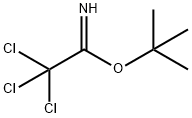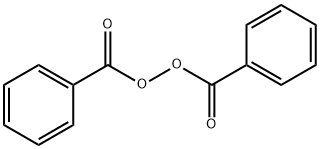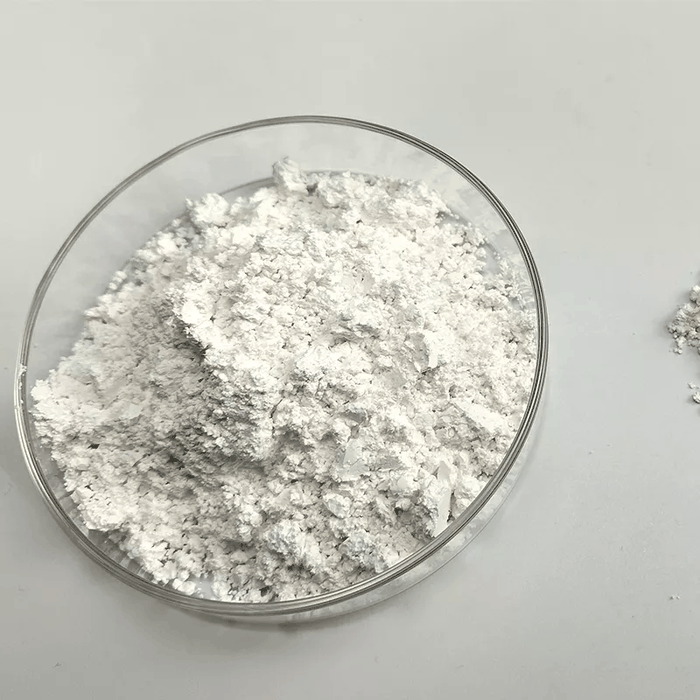Bis(4-tert-butylcyclohexyl) peroxydicarbonate
- CAS NO.:15520-11-3
- Empirical Formula: C22H38O6
- Molecular Weight: 398.53
- MDL number: MFCD00137256
- EINECS: 239-557-1
- SAFETY DATA SHEET (SDS)
- Update Date: 2024-12-18 14:15:32

What is Bis(4-tert-butylcyclohexyl) peroxydicarbonate?
Chemical properties
Colorless solid
Chemical properties
Bis(4-tert-butylcyclohexyl) peroxydicarbonate is crystalline solid (white powder) with slight odor, sensitive to heat and contamination, and may decompose violently or explosively at temperature 0–10°C, owing to self-accelerating exothermic decomposition due to shock, heat, or friction. To lessen the explosion risk, di-(4-tert-butylcyclohexyl) peroxydicarbonate should be stored in a temperature controlled vessel and mixed with water to form a slurry of the peroxide. Hazardous polymerization does not occur (12c). Detached storage is preferred for this chemical, including out of direct sunlight in a cool wellventilated place. It should be stored away from combustibles and other incompatible materials, including strong acids, bases, oxidizers, reducing agents, amines, and promoters/ accelerators, which may result in a violent decomposition or explosion. Refer to the Code for the Storage of Organic Peroxide Formulations (13a).
The Uses of Bis(4-tert-butylcyclohexyl) peroxydicarbonate
Di-(4-tert-butylcyclohexyl) peroxy dicarbonate is used as polymerization initiator. No information was located for this compound.
The Uses of Bis(4-tert-butylcyclohexyl) peroxydicarbonate
Bis(4-(tert-butyl)cyclohexyl) Peroxydicarbonate is a useful raw material used in the preparation of polymerizable yellow azo dyes applied in artificial intraocular lens. A catalyst.
General Description
Crystalline solid. Bis(4-tert-butylcyclohexyl) peroxydicarbonate is particularly heat and contamination sensitive. These materials above a given "control temperature" may decompose violently. They are often stored in a temperature controlled vessel, also mixed with water to form a slurry of the peroxide. This greatly lessens the explosion hazard risk.
Reactivity Profile
DI-(4-TERT-BUTYLCYCLOHEXYL)PEROXYDICARBONATE decomposes violently or explosively at temperatures 0-10° C. owing to self-accelerating exothermic decomposition; Several explosions were due to shock, heat or friction; amines and certain metals can cause accelerated decomposition [Bretherick, 1979 p. 156].
Properties of Bis(4-tert-butylcyclohexyl) peroxydicarbonate
| Melting point: | 91-92°C |
| Boiling point: | 435.1±28.0 °C(Predicted) |
| Density | 1.06±0.1 g/cm3(Predicted) |
| vapor pressure | 0.01Pa at 20℃ |
| storage temp. | 2-8°C |
| solubility | Chloroform (Slightly), Methanol (Slightly) |
| form | Solid |
| color | White to Off-White |
| Water Solubility | 600ng/L at 20℃ |
| Stability: | Light Sensitive |
| EPA Substance Registry System | Peroxydicarbonic acid, C,C'-bis[4-(1,1-dimethylethyl)cyclohexyl] ester (15520-11-3) |
Safety information for Bis(4-tert-butylcyclohexyl) peroxydicarbonate
Computed Descriptors for Bis(4-tert-butylcyclohexyl) peroxydicarbonate
Bis(4-tert-butylcyclohexyl) peroxydicarbonate manufacturer
ANAXLABORATORIES PRIVATE LIMITED
New Products
Tert-butyl bis(2-chloroethyl)carbamate (S)-3-Aminobutanenitrile hydrochloride N-Boc-D-alaninol N-BOC-D/L-ALANINOL N-octanoyl benzotriazole 4-Hydrazinobenzoic acid 3,4-Dibenzyloxybenzaldehyde 1,1’-CARBONYLDIIMIDAZOLE R-2-BENZYLOXY PROPIONIC ACID 1,1’-CARBONYLDI (1,2-4 TRIAZOLE) 4-HYDROXY BENZYL ALCOHOL 3-NITRO-2-METHYL ANILINE (2-Hydroxyphenyl)acetonitrile 4-Bromopyrazole 5-BROMO-2CYANO PYRIDINE 5,6-Dimethoxyindanone 5-broMo-2-chloro-N-cyclopentylpyriMidin-4-aMine 4-methoxy-3,5-dinitropyridine 2-(Cyanocyclohexyl)acetic acid 2-aminopropyl benzoate hydrochloride 1-(4-(aminomethyl)benzyl)urea hydrochloride tert-butyl 4- (ureidomethyl)benzylcarbamate diethyl 2-(2-((tertbutoxycarbonyl)amino) ethyl)malonate Ethyl-2-chloro((4-methoxyphenyl)hydrazono)acetateRelated products of tetrahydrofuran








You may like
-
 15520-11-3 Di(4-Tert-Butylcyclohexyl) Peroxydicarbonate 98%View Details
15520-11-3 Di(4-Tert-Butylcyclohexyl) Peroxydicarbonate 98%View Details
15520-11-3 -
 1522-11-3 98%View Details
1522-11-3 98%View Details
1522-11-3 -
 55441-95-7 99%View Details
55441-95-7 99%View Details
55441-95-7 -
 N-Vinylformamide 99%View Details
N-Vinylformamide 99%View Details
13162-05-5 -
 Chloro Uracil 1820-81-1 99%View Details
Chloro Uracil 1820-81-1 99%View Details
1820-81-1 -
 2-ethyl-6-methyl-3-hydroxypyridine succinate 99%View Details
2-ethyl-6-methyl-3-hydroxypyridine succinate 99%View Details
127464-43-1 -
 2-ETHYLPYRIDINE 100-71-0 99%View Details
2-ETHYLPYRIDINE 100-71-0 99%View Details
100-71-0 -
 181228-33-1 (S)-Methyl 3-amino-2-((tert-butoxycarbonyl)amino)propanote Hydrochloride (DAP-OMe. HCl) 99%View Details
181228-33-1 (S)-Methyl 3-amino-2-((tert-butoxycarbonyl)amino)propanote Hydrochloride (DAP-OMe. HCl) 99%View Details
181228-33-1